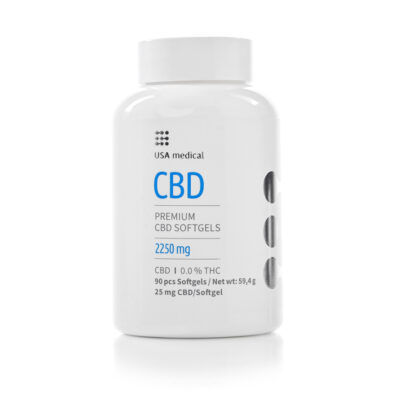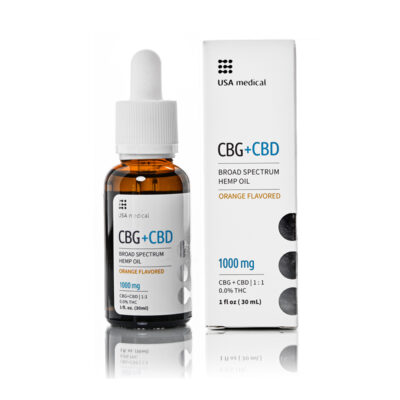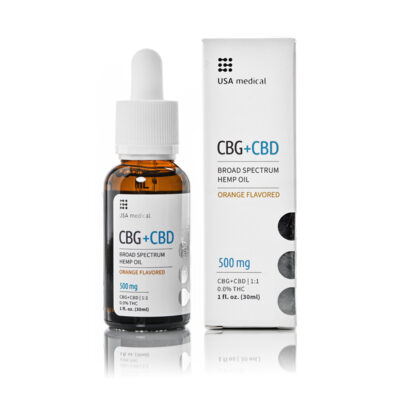
What Is CBG Oil?
If you’re looking for a comprehensive, natural solution to tackle inflammation and its debilitating effects, you’re in the right place. Welcome to the new era

CBG oil has been creating waves in the health and wellness industry, and for good reasons. But with any health trend, it’s crucial to separate fact from fiction.
Scientific research plays a vital role in validating the health claims associated with CBG (Cannabigerol) oil. This blog aims to dive deep into the scientific evidence behind CBG, discussing its interaction with the human body and its potential health benefits.
In the age of information, it’s easy to fall for misleading claims. Scientific research provides us with evidence-based information that helps us make informed decisions.
The focus of this blog will be to explore:
In summary, this introduction sets the stage for a comprehensive exploration of the scientific research backing CBG oil’s potential health benefits.
We’ll be examining the cannabinoid’s interaction with the human body, its anti-inflammatory and antibacterial properties, its potential as a neuroprotective agent, and more.
Cannabigerol, commonly known as CBG, is one of the many cannabinoids found in the cannabis plant. Unlike its more famous cousins, THC (Tetrahydrocannabinol) and CBD (Cannabidiol), CBG is less abundant but holds significant promise in medical research.
Often referred to as the “mother” or “stem cell” of cannabinoids, CBG is the precursor from which other cannabinoids are synthesized. This makes it a unique and vital component of the cannabis plant’s chemical makeup.
While THC is known for its psychoactive effects and CBD for its therapeutic benefits, CBG is gaining attention for its potential in treating a range of health conditions.
Key differences between CBG and other cannabinoids:
To better understand the potential of CBG, it’s crucial to delve into how it interacts with the body’s endocannabinoid system, which will be the focus of the next section.
In conclusion, CBG is a unique cannabinoid that serves as the precursor to other cannabinoids like THC and CBD.
Unlike THC, it’s non-psychoactive, and it holds promise for a broad spectrum of potential health benefits.
The science behind these benefits is what we’ll explore in the rest of this blog.
The endocannabinoid system (ECS) is a complex network of receptors, enzymes, and endocannabinoids present throughout the human body.
It plays a crucial role in regulating various physiological processes such as mood, pain, and appetite. CBG interacts with this system but in a way that is distinct from other cannabinoids like CBD and THC.
The ECS primarily consists of two types of receptors: CB1 and CB2.
CB1 receptors are mainly found in the brain, while CB2 receptors are found throughout the body, particularly in immune cells.
Key interactions of CBG with the ECS:
By better understanding CBG’s unique interaction with the ECS, researchers can unlock its full therapeutic potential. This is a critical aspect of ongoing research into the benefits of CBG and other cannabinoids.
In summary, CBG’s unique interaction with the endocannabinoid system sets it apart from other cannabinoids.
It acts as a partial agonist to CB1 and CB2 receptors and exhibits a range of interactions that could be therapeutically beneficial.
One of the most promising areas of CBG research is its anti-inflammatory effects.
Inflammation is a natural response to injury or infection but can become problematic when it turns chronic, leading to a host of health issues like arthritis, heart disease, and even cancer.
Chronic inflammation is linked to a myriad of health issues. An anti-inflammatory agent like CBG could be a game-changer in managing these conditions.
Evidence for the anti-inflammatory properties of CBG:
The anti-inflammatory properties of CBG could make it a key player in future treatments for a variety of chronic inflammatory diseases. More research is needed, but the initial findings are promising.
In conclusion, CBG has shown potential as a powerful anti-inflammatory agent.
Its ability to reduce inflammatory markers and its potential benefits in treating conditions like IBD and neuroinflammation make it a promising subject for future scientific research.
Neuroprotection refers to the preservation of the neural structure and function. Neuroprotective agents can help prevent or slow down the damage to nervous system cells, typically caused by factors like oxidative stress and inflammation. CBG is gaining attention for its potential role as a neuroprotective agent.
Protecting neural cells is crucial for preventing and treating neurodegenerative diseases like Alzheimer’s, Parkinson’s, and multiple sclerosis.
Evidence for the neuroprotective role of CBG:
CBG’s potential as a neuroprotective agent could be groundbreaking for treating a range of neurodegenerative diseases. The preliminary data offers a glimmer of hope, but more in-depth research is essential.
In conclusion, CBG has shown promise as a neuroprotective agent, capable of combating oxidative stress and inflammation while protecting against glutamate toxicity.
These properties could make it invaluable in treating neurodegenerative diseases.
Mental health issues like anxiety and mood disorders affect millions worldwide. Current treatments often come with a host of side effects, making the search for alternative therapies crucial. CBG is emerging as a potential treatment for anxiety and mood disorders.
The prevalence of these conditions and the limitations of current treatments make it essential to explore new therapeutic options.
Evidence for CBG’s role in treating anxiety and mood disorders:
CBG’s potential to treat anxiety and mood disorders could be a monumental step forward in mental health treatment. While more studies are needed, the early findings are indeed promising.
In summary, CBG has shown potential in treating anxiety and mood disorders through its interaction with serotonin receptors, the ECS, and by affecting GABA uptake.
These initial findings make CBG a promising candidate for future research in mental health therapies.
Antibacterial resistance is a growing concern in healthcare, making the search for new antibacterial agents critical.
CBG has demonstrated antibacterial properties that could make it a candidate for treating bacterial infections.
The rise of antibiotic-resistant bacteria requires urgent attention to discover new and effective treatments.
Evidence for CBG’s role as an antibacterial agent:
While still in the early stages of research, CBG’s antibacterial properties could make it a vital tool in combating antibiotic-resistant bacterial infections.
In conclusion, CBG has demonstrated significant antibacterial properties, particularly against Staphylococcus aureus, by disrupting biofilms and enhancing membrane permeability.
This suggests it could be a valuable weapon in the fight against antibiotic-resistant bacteria.
The future for CBG oil looks promising, with ongoing research exploring its myriad of potential benefits.
To validate the initial findings and to discover new applications for CBG oil.
Upcoming areas of focus for CBG research:
It’s an exciting time for CBG research, as scientists continue to uncover its potential applications across a range of conditions.
In summary, the future of CBG looks promising with continued research focusing on human trials, drug interactions, and understanding its long-term effects.
The scientific community is optimistic about CBG’s potential to offer new treatments for a variety of conditions.
These statements have not been evaluated by the Food and Drug Administration. These products/services are not intended to diagnose, treat, cure, or prevent any disease.

If you’re looking for a comprehensive, natural solution to tackle inflammation and its debilitating effects, you’re in the right place. Welcome to the new era

The Invisible Enemy Within You wake up feeling groggy, your joints ache, and that old neck pain seems to have returned. No, it’s not just

CBG oil has been creating waves in the health and wellness industry, and for good reasons. But with any health trend, it’s crucial to separate

In stock | Free shipping

In stock | Free shipping

In stock | Free shipping

In stock | Free shipping

In stock | Free shipping

In stock | Free shipping

In stock | Free shipping

In stock | Free shipping

In stock | Free shipping

In stock | Free shipping

In stock | Free shipping

In stock | Free shipping

In stock | Free shipping

In stock | Free shipping

In stock | Free shipping